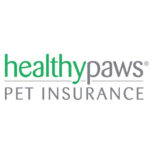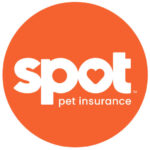Best Pet Insurance For Pomeranians In 2025
In my expert opinion, Healthy Paws offers the best insurance plan for Pomeranians.
We’ve saved shoppers an average of $350 per year on their pet insurance.
Owning a Pomeranian means taking special care of their health. Pomeranians, being purebred dogs, are more likely to face genetic health issues than mixed-breed pets. Sadly, 4 in 5 pet owners can’t afford an unexpected $500 vet bill on their own. Pet insurance can help ease that financial pressure.
In this review, we’ll examine top pet insurance providers for Pomeranians and help you choose the right plan. Just like health insurance for people, pet insurance helps reduce out-of-pocket expenses and offers better treatment. But rest assured, it’s more affordable than human health insurance.
Best Pet Insurance Companies For Pomeranians, 2025
Different companies providing pet insurance for Pomeranians share common objectives of pet health and financial safety, yet they vary in their features. What suits one Pomeranians may differ for another.
Here’s our assessment of the top pet insurance choices for Pomeranians.



Comparison Of The Best Pet Insurance Companies For Pomeranians
The comparison of top-rated pet insurers for Pomeranians illustrates their individual strengths.
| Overall Rating | Best For | Waiting Period | Reimbursement % | Benefit Limit | Get A Quote | |
|---|---|---|---|---|---|---|
| Healthy Paws |
|
Overall |
15 days accidents/illness |
70%, 80%, 90% |
Unlimited annual and lifetime |
Instant Quote |
| Lemonade |
|
Cheap |
2 days accidents, 14 days illness |
70%, 80%, 90% |
$5,000 to $100,000 annually |
Instant Quote |
| ManyPets |
|
Puppies |
15 days accidents/illness |
70% or 80% |
Unlimited annual and lifetime |
Instant Quote |
| Pumpkin |
|
Older Dogs |
14 days accidents/illness |
90% |
$10,000, $20,000 or unlimited |
Instant Quote |
| Spot |
|
Multiple Dogs |
14 days accidents/illness |
70%, 80%, 90% |
$2,500 to unlimited |
Instant Quote |
Our Methodology
Assessments and ratings were drawn from a review of insurer websites, customer feedback, external reviews, and personal experiences with pet insurance.
Quotes Analyzed
Years Of Industry Experience
Brands Reviewed
Research Hours
Detailed Reviews Of The Best Pomeranian Insurance Companies
Best Overall
Key Statistics
Why We Like Them
⇅Healthy Paws is praised for its pet insurance that includes unlimited claim payouts and excludes per-incident maximums or caps. This prevents you from having to make tough decisions based on policy limitations. Their policy is straightforward, without expensive extras, and they permit visits to any licensed vet. Claims are easily processed through their mobile app or website, typically within two days.
Benefits & Drawbacks
⇅- Annual or lifetime payouts are unlimited.
- Your money back if returned within 30 days.
- Most claims will be sorted out within a two-day processing window.
- Directly paying the vet may be an option. ✓
- No routine healthcare option is accessible. ✘
Runner-Up For Best Overall
Key Statistics
Why We Like Them
⇅Lemonade emerged as the least expensive choice for pet insurance for Pomeranians. While their coverage limits range from $5,000 to $100,000 annually, similar to other companies we reviewed, they do not provide unlimited coverage like Healthy Paws. Lemonade’s standard policy includes accidents, illnesses like cancer and heart disease, common issues such as broken bones, and hip dysplasia in older Pomeranians. However, they do not cover preexisting conditions, dental problems, behavioral issues, or elective procedures, which is standard for most insurers.
Benefits & Drawbacks
⇅- Elect to participate in a wellness plan.
- Accidental coverage begins after a short two-day period.
- Combine pet insurance with Lemonade's home, renters, or car insurance and save 10% on your total premium ✓
- Around-the-clock telehealth for pets is not provided.
- You can opt to pay more to cover vet exam costs.
- Prescription pet food and microchipping are not part of the covered services. ✘
Best For Puppies
Key Statistics
Why We Like Them
⇅ManyPets provides excellent insurance coverage for puppies. Pre-existing conditions do not influence rates, and treated conditions may be covered after 18 months. Unrelated conditions remain eligible for coverage. Young Pomeranians, like all puppies, are susceptible to illnesses like poisoning, ingestion of foreign objects, and accidents due to their energetic behavior. Insuring them early minimizes the risk of exclusions for pre-existing conditions in the future.
Benefits & Drawbacks
⇅- Accessible in over forty states
- Includes vet visit costs for illness and accident checkups.
- Presents customizable wellness plans. ✓
- An all-hours pet telehealth hotline is not in operation.
- Treatment for pet behavior isn't covered here.
- There's no insurance support for alternative therapies. ✘
Best For Older Dogs
Key Statistics
Why We Like Them
⇅Pomeranians tend to experience genetic illnesses like cruciate ligament problems and hip dysplasia as they age, which can result in expensive treatments. Pumpkin pet insurance provides immediate coverage for these conditions with no waiting periods and reimburses veterinary exam fees for older Pomeranians undergoing treatment. They offer various coverage plans for a wide range of Pomeranians health issues, including surgeries and dental problems, along with three deductible options and a standard reimbursement rate of 90%.
Benefits & Drawbacks
⇅- Voluntary wellness program offered
- Savings when you insure more than one furry friend.
- You can get 90% back on dogs and cats aged 8 weeks and up. ✓
- A 24/7 pet teleconsultation service isn't in place.
- No plan exists specifically for accidents. ✘
Best For Multiple Pets
Key Statistics
Why We Like Them
⇅Many owners of Pomeranians have multiple pets because they are known for their friendly temperament. Spot offers a 10% discount for insuring more than one pet, leading to substantial savings. Their optional preventive care plan covers wellness services such as an annual vet visit, fecal test, and teeth cleaning, and includes coverage for certain vaccinations. Spot offers a 30-day money-back guarantee if you’re unsatisfied with their coverage or service. They also reimburse up to 90% of eligible vet expenses and provide a 24/7 vet helpline. Moreover, you can choose any U.S.-licensed veterinarian or specialist.
Benefits & Drawbacks
⇅- Focuses on microchip inclusion
- There's a low-cost $100 deductible available.
- Get pet health advice any time with their 24/7 telehealth line. ✓
- In the event of accidents, a 14-day waiting period applies, whereas certain top competitors handle claims within 2 days. ✘
Average Cost Of Pet Insurance For Pomeranians
| Company | Deductible | Annual Reimbursement % | Monthly Price | Age of Dog |
| Healthy Paws | $500 | 70% | $70.30 | 5 year old |
| Lemonade | $500 | 70% | $40.00 | 5 year old |
| Spot | $500 | 70% | $73.34 | 5 year old |
| Healthy Paws | $500 | 80% | $36.52 | 1 year old |
| Lemonade | $500 | 80% | $20.67 | 1 year old |
| Spot | $500 | 80% | $53.80 | 1 year old |
| Healthy Paws | $500 | 70% | $37.64 | 3 month old |
| Lemonade | $500 | 70% | $29.13 | 3 month old |
| Spot | $500 | 70% | $83.12 | 3 month old |
Average Cost Of Typical Vet Procedures
| Typical Vet Procedure | Average Cost Of Procedure |
| Puppy vaccinations | $75-100 |
| Flea & tick prevention | $40-200 |
| Heartworm prevention | $24-120 |
| Spay or neuter surgery | $200-800 |
| Annual exam | $240-600 |
| Teeth cleaning | $200-500 |
| Microchip | $40 |
Average Cost Of Emergency Vet Procedures
| Emergency Pet Procedure | Average Cost Of Procedure |
| General consultation/exam | $100-$150 |
| General bloodwork | $80-200 |
| X-rays | $150-$250 |
| Ultrasound | $300-$600 |
| 1-2 day hospitalization | $600-$1,700 |
| 3-5 day hospitalization | $1,500-$3,500 |
| Wound treatment & repair | $800-$1,500 |
| Emergency surgery | $800-$2,500 |
| Oxygen therapy | $500 |
Pomeranians are prone to dental disease, tracheal collapse, and luxating patellas. With PolicyOwl, you can upload your current policy and instantly see if your coverage matches your dog’s needs.
Is Pet Insurance Worth It For Pomeranians?
Pet insurance helps with surprise vet bills. Many owners pay for their pets’ medical care on their own, but a lot of Americans can’t cover a $1,500 emergency visit. Good insurance can help protect you from that burden. You’ll be able to focus on your pet’s care rather than money. The real value of pet insurance depends on your expectations. If your pet has a chronic condition and you’re looking for financial assistance, you’ll be disappointed since preexisting conditions aren’t covered. But if you understand your policy and it fits your budget, it will likely prove worth it.
Common Health Issues For Pomeranians
Purebred Pomeranians are generally more prone to health issues. Over time, certain breeders have neglected the importance of genetics, leading to the spread of health problems within the Pomeranian population. This makes Pomeranians more likely to develop genetic conditions than other breeds.
Here are some of the most common health problems Pomeranians encounter:
- Patellar Luxation
- Tracheal Collapse
- Dental Problems
- Heart Disease (e.g., Mitral Valve Disease)
- Hypothyroidism
- Legg-Calvé-Perthes Disease
- Hip Dysplasia
How To Find The Best Pet Insurance Company For You
Pet insurance plans differ in cost and options depending on the company, which complicates the decision-making process. Before applying for coverage, use these tips to find the most suitable plan for your pet.
Check Whether Your Pet Is Eligible
To be insured, puppies and kittens typically need to be between 6 and 10 weeks old, varying by company. Older pets may not be eligible for initial enrollment or might only qualify for accident coverage. After enrollment, however, most plans guarantee lifelong coverage with regular premium payments.
Research What’s Covered
Pet insurance plans usually include coverage for surgeries, hospital stays, and medications when pets get sick or injured. However, some companies charge extra for certain services or don’t cover them at all. A few examples:
- Exam fees: While treatments like X-rays and surgery may be covered, the vet’s exam fee might not be.
- Alternative therapies: Some companies include acupuncture and physical therapy in their basic plans, while others charge extra.
- Behavioral therapy: Treatments for aggression or other behavioral issues may not be covered.
- Prescription food: Many plans won’t pay for special diets, even if your vet prescribes them.
- Dental care: Coverage for dental issues, like gingivitis or periodontal disease, varies between plans. Some may cover these only if your pet has had recent cleanings, while wellness plans might include cleaning costs.
Most pet insurance plans also won’t cover pre-existing conditions, cosmetic procedures, or breeding-related expenses.
Decide How Much Coverage You Want
Pet insurance typically limits annual payouts, though some plans offer unlimited coverage. You need to determine the level of coverage that provides peace of mind for covering veterinary expenses. If your pet stays healthy, you might only incur routine care costs for years. However, unforeseen surgeries or major illnesses could result in substantial costs.
Understand Reimbursements And Deductibles
Pet insurance usually reimburses a percentage of your vet bill, and you can choose reimbursement rates of 70%, 80%, or 90% when purchasing the plan.
Alternatively, some policies may pay a fixed amount for treatments, which might be less than your vet’s charges, leaving you to cover the rest.
Most policies come with a deductible, the amount you pay before coverage starts. Deductible amounts generally range from $100 to $250 or more. Some plans apply the deductible to each incident, while others use an annual deductible.
Lower deductibles and higher reimbursement percentages usually increase premiums, while higher deductibles and lower reimbursement percentages reduce premiums.
Check Waiting Periods
Most insurance plans include a short waiting period, typically about 14 days after purchase, before they cover general accident and illness treatments. During this period, medical expenses are not reimbursed. Some plans have longer waiting periods for certain conditions, such as cruciate ligament injuries, which are common orthopedic issues in dogs. Cruciate ligaments play a vital role in knee stability, and injury can significantly impair a dog’s ability to walk.
Examine Extra Costs
Certain pet insurance providers include routine services such as vet visits and vaccinations in their policies. Before signing up, determine if it’s worthwhile by comparing the annual cost of the wellness plan with your typical yearly expenses for these services. Be sure to check the details, as coverage for wellness services may differ among insurers.
Compare Quotes
Pet insurance expenses vary based on the insurer and the extent of coverage. Certain insurers provide discounts, like savings for covering multiple pets. However, a discount doesn’t guarantee it’s the best choice. To determine the most appropriate pet insurance, compare quotes from several plans with comparable coverage levels, deductibles, and reimbursement limits.
Factors That Impact Cost Of Your Pet Insurance Policy
Pet insurance premiums, similar to health insurance, are based on certain factors:
- Your area. The cost of vet care in your region is a factor in determining your premium.
- Your pet’s age. Older pets tend to have more health issues, which can drive up your premium.
- Your pet’s breed. Certain breeds have known health problems. Bulldogs and Boston terriers frequently have breathing issues, while larger breeds, like German Shepherds, are prone to hip dysplasia, which may impact the price of your policy.
- Deductible and coverage. Lower deductibles mean higher premiums because your plan will cover costs sooner. Choosing a $100 deductible instead of $500 will increase your premium.
FAQs
Is pet insurance cheaper for purebred dogs?
Insuring purebred dogs is more costly because they are more likely to develop expensive genetic health problems compared to mixed-breed dogs.
What is the average cost of owning a Pomeranian?
Expect to pay about $3,000 upfront for vaccinations, food, grooming, and insurance in the first year, with subsequent years averaging around $1,900.
What insurance do you need for a dog?
It’s beneficial for dog owners to have pet insurance to cover vet expenses and secure their dog’s health.
Sources
⇅